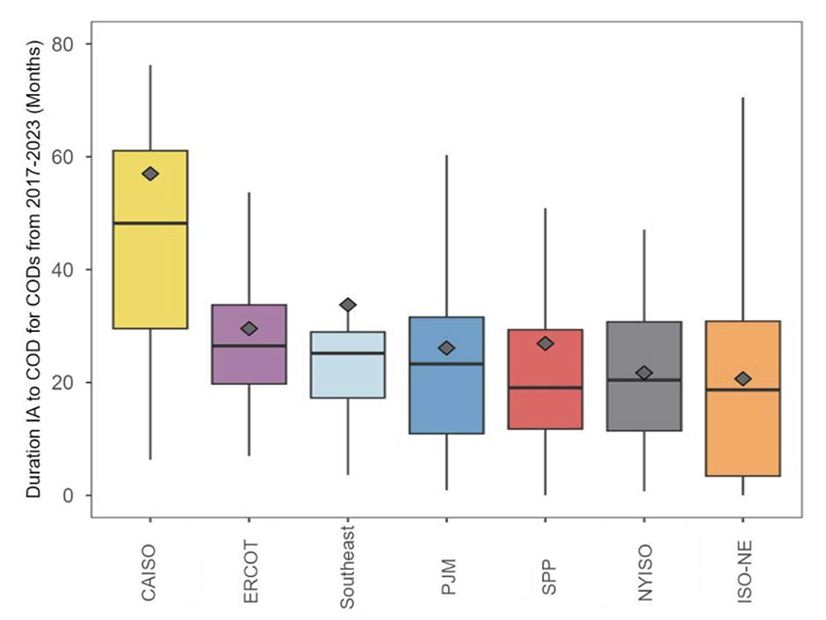
Speeding up the interconnection queues is becoming more important as demand growth and the retirement of existing generators combine to cut into reserve margins around the U.S., experts said during a webinar Sept. 4 hosted by Advanced Energy United.
Grid Strategies President Rob Gramlich summarized a recent report his firm co-authored with the Brattle Group for United and the Solar and Storage Industries Institute called “Unlocking America’s Energy: How to Efficiently Connect New Generation to the Grid.”
The report’s recommendations would help developers of generation get more certainty from the interconnection process, which generators do not have when they enter the queues and put up deposits to save a place in line, Gramlich argued.
“The developers really need certainty, or else, if you don’t have it, you’ll continue to have this queue churn and projects coming in and out in order to get information,” Gramlich said.
After putting up their deposits, projects end up in a study process that is usually lengthy; then getting them built can be delayed because of required transmission upgrades, Gramlich said.
Supply chain issues are delaying both the construction of network upgrades and sometimes the generators themselves, with PJM reporting that nearly 40 GW of projects have made it through its queue but are not in operation yet.
“There’s no single answer to that, but there’s maybe a few common challenges,” said Hannah Muller, senior director of external and market affairs at Clearway Energy Group. “One is supply chain; that’s both for the actual project equipment, but also the transmission infrastructure. There’s just years [of] delay in getting necessary equipment; it’s just a function of the global economy at this point.”
Other issues include permitting and community opposition to new infrastructure; FERC and the RTOs can speed up the interconnection, but those are outside of their purview, Muller said.
FERC made changes to the baseline for queues with Order 2023, but the report and panelists argued that additional measures are needed. The commission is holding a two-day technical conference from Sept. 10 to 11 on that subject; Gramlich said it would be a good venue for helping to share best practices from the different regions.
In addition to certainty, the Grid Strategies report argues for quicker schedules and non-discrimination that guarantees a level playing field for “similarly situated interconnection customers.” Adopting an interconnection entry fee for proactively planned capacity would provide customers with significant interconnection cost certainty and address cost allocation of the upgrades identified. The report also suggests a fast-track process to use existing and already planned interconnection capacity that would prioritize the projects most ready to go live.
The interconnection study process also needs improvements to enable the fast-track process and make studies more efficient generally, the report said.
One promising way to improve the study process that is in its early stages is the use of artificial intelligence, said Kyle Davis, the Clean Energy Buyers Association’s senior director of federal affairs.
“SPP, Amazon Web Services, Pearl Street [Technologies] and NextEra [Energy] are testing out Pearl Street’s SUGAR platform to try and help organize and bring that machine-learning process to the interconnection queue analysis,” Davis said.
Testing so far indicates the technology can whittle what has historically taken three months down to as little as an hour, he added. The report discusses the pilot effort, and Pearl Street’s CEO, David Bromberg, is a witness at FERC’s technical conference next week.
The final set of modifications that the report suggests is around speeding up the transmission construction backlog to address growing constraints that hinder network upgrades. The report noted that while it did not focus on proactive transmission planning, that is key to speeding up the queues, and several transmission providers are already implementing proactive planning, while others are developing long-term planning processes to comply with FERC Order 1920.
Speeding up construction also would mean addressing supply chain issues, with which the Department of Energy could help, Gramlich said. As for FERC jurisdictional issues, it is unclear why some utilities can get network upgrades built more quickly than others; the report suggests some independent monitoring of that stage to identify why that is happening and address issues that slow down construction, Gramlich added.
Demand is growing, but supply is out there that could address it, said R Street Institute Senior Fellow Beth Garza, who is also speaking at FERC’s technical conference next week.
“Those costs eventually are borne by consumers,” Garza said. “It’s consumers that are using the electricity. They’re the ones getting value out of having the electricity. … It’s the indirect costs that consumers absolutely bear by inefficient processes.”


